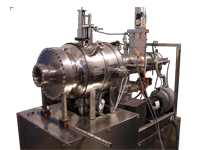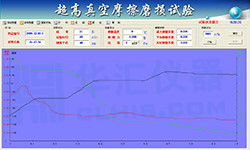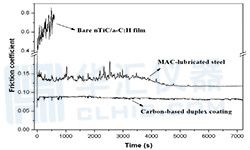
Location:Home > Products > Vacuum series
Sft-4000 ultra-high vacuum friction and wear tester is mainly used to simulate the friction and wear of materials under the special environment of aerospace and aviation. It is used to evaluate the tribological properties of metal alloys, ceramics and composites in high vacuum and different atmospheres. Its working mode is dry friction of bolt (ball) - disc and friction in case of solid lubrication.
This tester uses a vacuum pump to vacuum the vacuum environment laboratory and remove unnecessary gas and moisture. Through the magnetic transmission technology, the friction experiment between the bolt (ball) - disk is realized and the change of friction coefficient of materials is detected. By using the computer control technology, the load is applied to the bolt (ball) through the weight loading mechanism to act on the surface of the sample. At the same time, the sample is fixed on the test platform and rotated at the set speed. The friction signal is obtained through the sensor. After amplification, the input computer obtains the friction coefficient curve through the calculation of the friction signal through the A / D conversion. Through the change of friction coefficient curve, the tribological characteristics of various materials under ultra-high vacuum are obtained.




(Control cabinet) (Test curve) (Analysis curve)
Key technical parameters
1. Instrument weight:430kg
2. Appearance size:800×750×1900(mm×mm×mm)
3. Chamber size: Φ400mm × 600mm
4. Extreme vacuum degree:5.0×10-7 Pa
5. Load: 1000~1500 g
6. Shaft rotation speed: 10~1500 r/min
7. Friction coefficient accuracy:1%F.S
8. Friction balls size: Φ3、Φ4、Φ5、Φ6mm
9. Stage size: Φ70 mm
10. Rotation radius: 3~20 mm
11. Stage height variation range: 0~25 mm
12. Power:5kw
13. Operating Voltage:220V
14. Data processing: the Access, Excel database file, Word experiment report and Jpeg picture can be generated